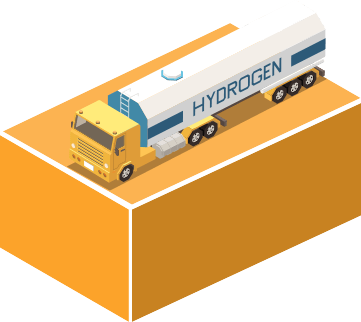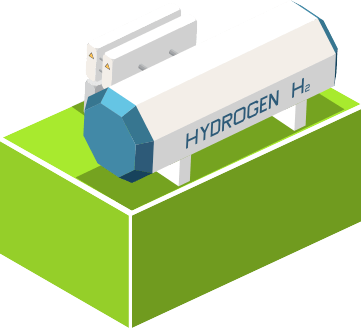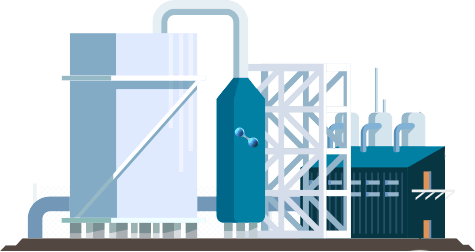

Banks are most likely to finance renewable energy-powered electrolysers to produce green hydrogen at ammonia plants and refineries, because demand for the gas is proven. That would cut emissions from methane-produced hydrogen immediately. It would also show that green hydrogen is viable rather than theoretical and allow electrolyser technology to be scaled.
Growing global demand for pure hydrogen, 1975-2018
Source: IEA
Why financing hydrogen is hard
When the renewable energy revolution started a few decades ago, while financing was hard to come by, there was really only one question banks had to ask. Would the electricity produced by solar panels and wind turbines be cheap enough to compete with coal or gas? The rest was relatively simple. Demand for electricity was clear, and the problem of getting it to market has long been solved by national grids.
With green hydrogen the picture is very different. First there is the complexity of production, which requires a local source of both water and renewable energy. Then comes the question of getting the product to where it needs to be consumed. There is limited existing hydrogen pipeline infrastructure. Shipping would involve building one plant to liquefy the gas first, and a second to convert back to gas before consumption at the destination. Alternatives of using ammonia or other fuel carriers for shipping may become viable but are similarly difficult to carry out at this stage.
Water and solar/wind
Green hydrogen requires both a local source of water and renewable energy to produce

Transportation tanker
Liquid hydrogen needs either extensive pipelines or shipping to transfer

Power station
The destination needs a plant to reconvert the hydrogen to gas before consumption
Green hydrogen projects become devilishly complex. As well as the technology risks, a project might also involve building pipelines, liquefaction plants or even an onsite wind or solar energy farm. All of these moving parts, each with its own delivery risk, must be delivered before hydrogen production can start, and the cash to repay loans begins to flow.
Finally there is currently no financial market for trading hydrogen, or hydrogen derivatives, so producers cannot take out futures contracts to guarantee a price for their hydrogen. That means they cannot offer banks any confidence about the size of future revenue, even once hydrogen generation does begin, unless the buyer agrees to a price in advance.
Ammonia production plants and oil refineries that already use hydrogen offer an obvious solution. Demand is certain and there is limited new infrastructure to build. Most importantly, there is no buyer to be sought. The company producing the hydrogen is also the consumer. Banks effectively lend against the balance sheet of the company, generally a large one.
What comes next
Greening ammonia production and petroleum refining may seem a rather shrunken vision of a hydrogen-powered future. But acting in this way actually catalyses the development of other, currently only potential, green hydrogen uses. As electrolyser technology is deployed at scale, costs fall and the likelihood of technology breakthroughs increases. That lowers the price of green hydrogen and makes it more attractive for other uses.
It also does not stop governments from funding new uses of green hydrogen, such as hydrogen-powered bus and train networks, or hydrogen-fuelled power plants. Banks will also be relatively comfortable lending to supply projects where demand at a fixed price is guaranteed by a state-backed entity.





But government financing is not unlimited, so it is essential that some green hydrogen supply projects are funded privately. This will not only increase demand for green hydrogen and encourage economies of scale, but also demonstrate to other private investors that the industry is viable.
That is also a reason why oil and gas companies, which understandably have been viewed with scepticism by some environmentalists for embracing hydrogen, should be welcomed for developing electrolyser projects. They have the ability to fund projects from equity, even if the economics are uncertain, or the project risk is high, rather than relying on bank lending.
The potential is for a variety of green hydrogen generation projects to move forward: government-backed schemes, projects equity funded by oil and gas companies, and principally, at least initially, schemes backed by traditional bank project finance to green the hydrogen already used by ammonia plants and refineries. Together they could form the basis of a healthy and growing green hydrogen ecosystem.
A hydrogen market needs time
Visions of a hydrogen-powered future also often assume a global trade underpinned by a spot market for the fuel at a commodity exchange, and derivatives allowing for risk management. But a financial market is likely to emerge slowly, only over decades, as market participants seek to manage risk, and financial market participants see profitability in providing a service.

The lack of a trading market does not need to limit hydrogen production and consumption in the short term, however, as we can see from the liquefied natural gas (LNG) market.
Almost 60 years on from the first LNG shipment, financial and derivatives markets for the fuel are still embryonic. But that has not stopped the development of major LNG projects, most recently in the US. Banks were happy to lend against Cheniere’s Sabine Pass project in Louisiana a decade ago, because the company had signed guaranteed offtake contracts.
We come back to where we started. Proven demand, which for now means ammonia and oil refineries, can bring forth the project financing really needed to kickstart green hydrogen production and consumption. This is one of the great opportunities, a bridge to the hydrogen economy of the future.
Rachel Crouch is a project finance lawyer specialising in energy projects in the US and Latin America. She has represented developers, investors and lenders in the financing of energy and infrastructure, with a focus on renewables. Formerly at Norton Rose Fulbright, she is currently senior counsel at The AES Corporation, a US independent power producer.

